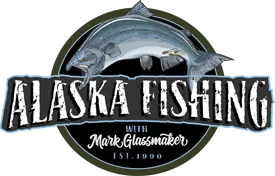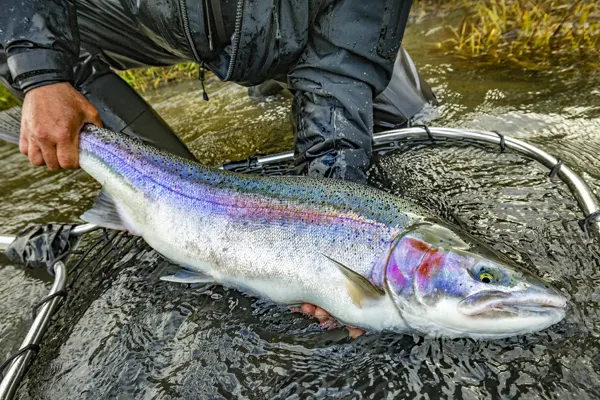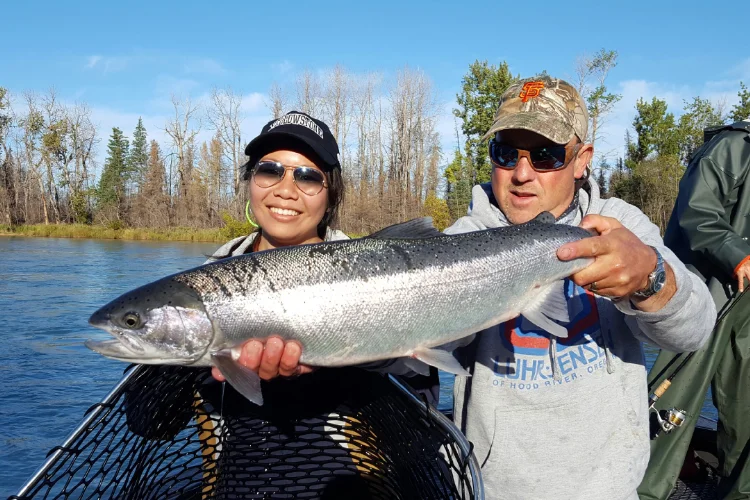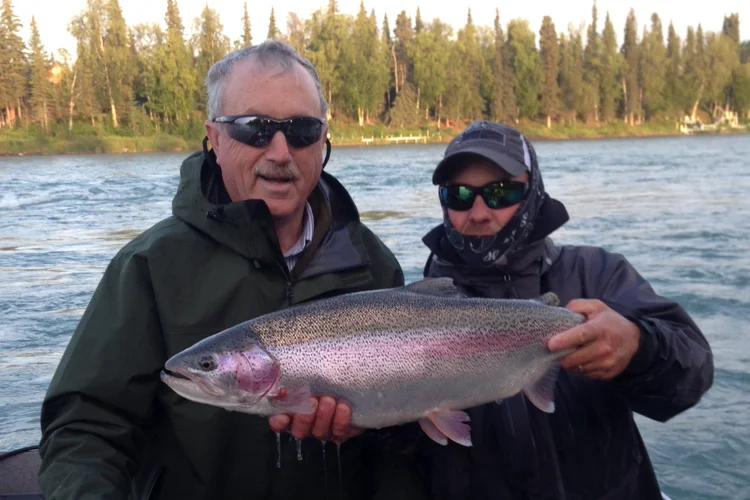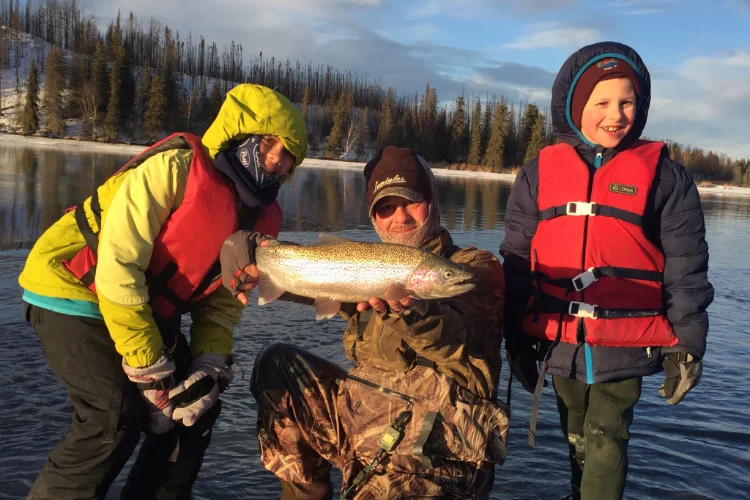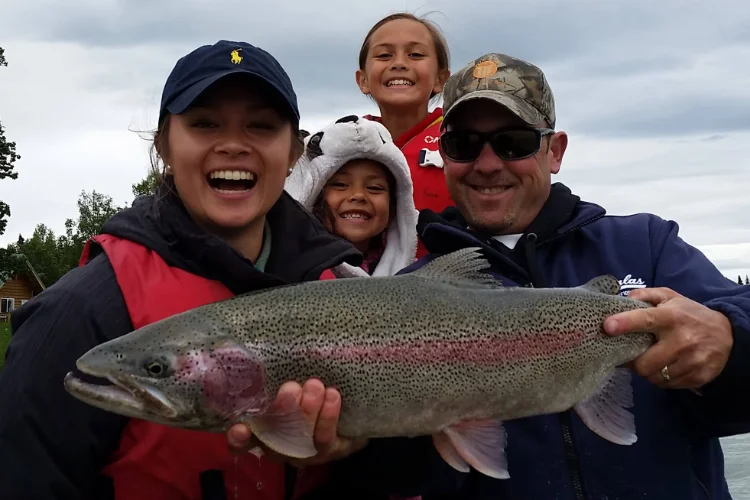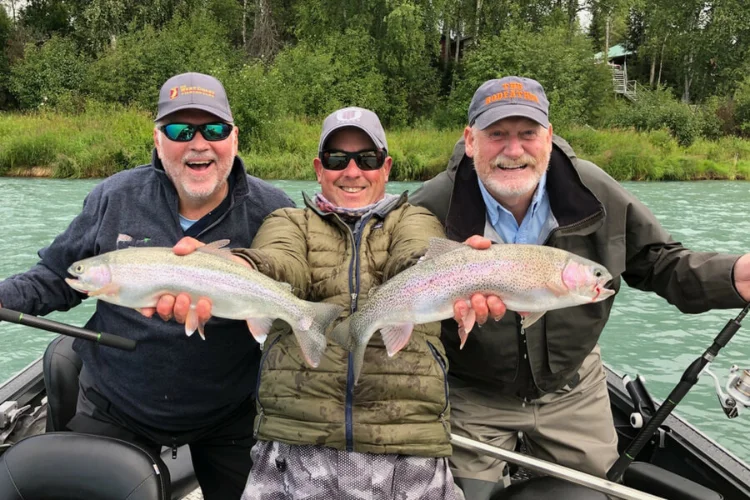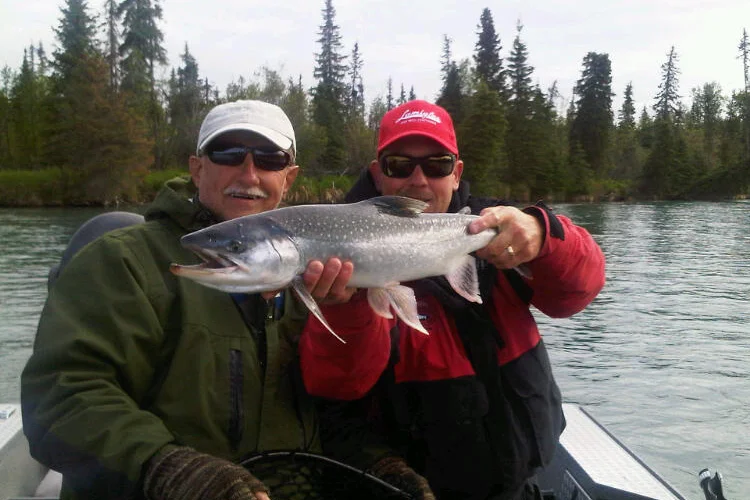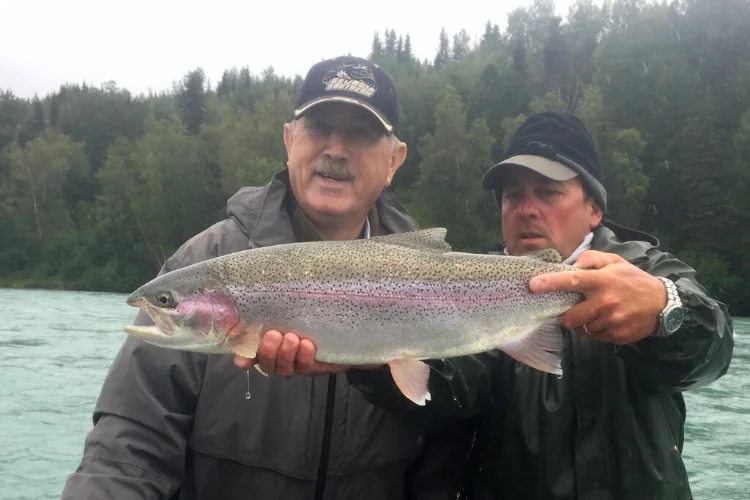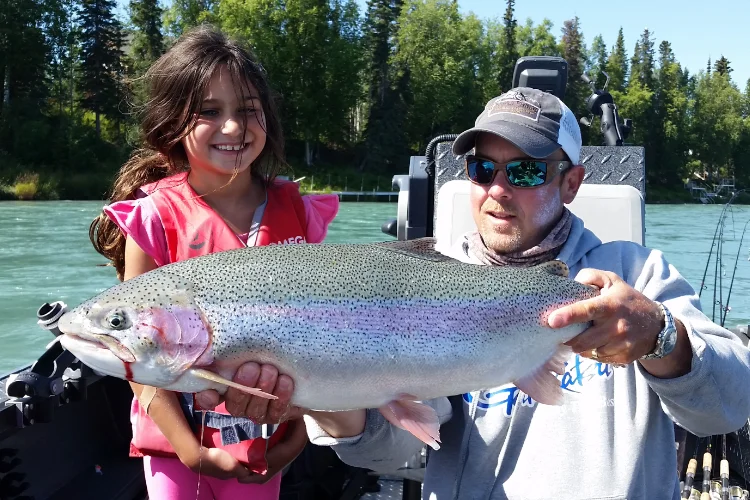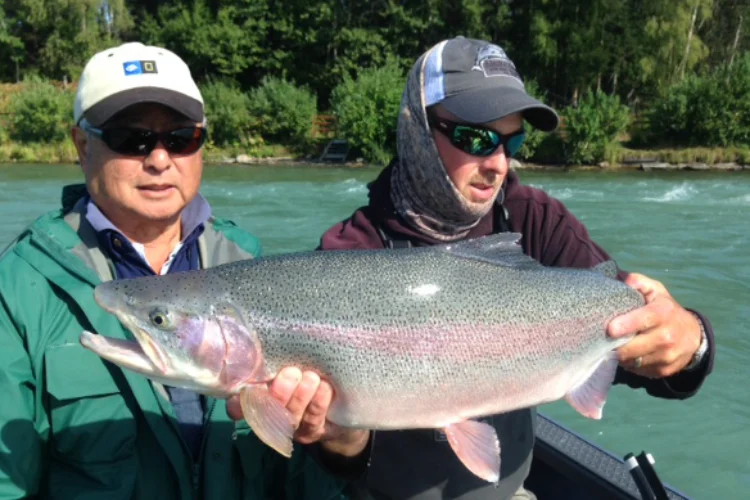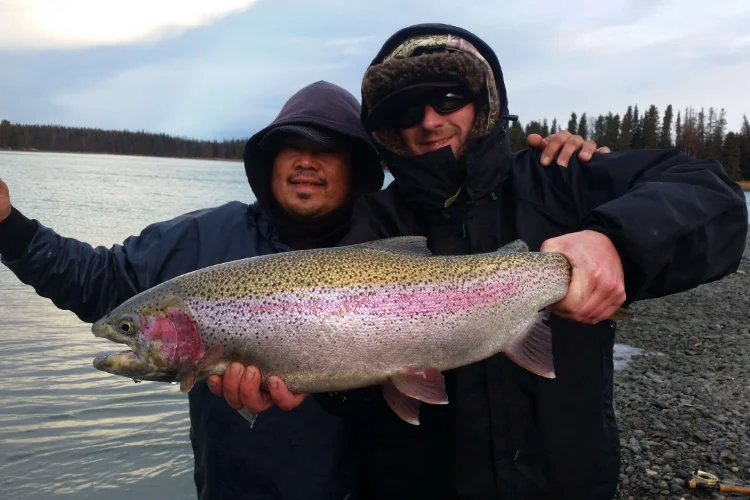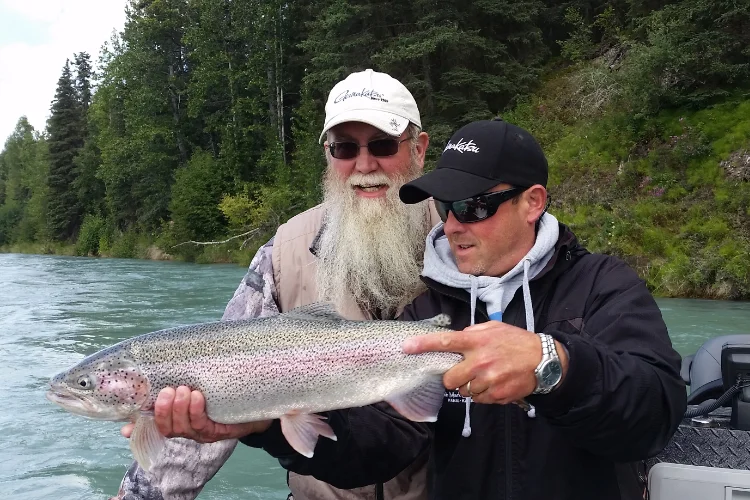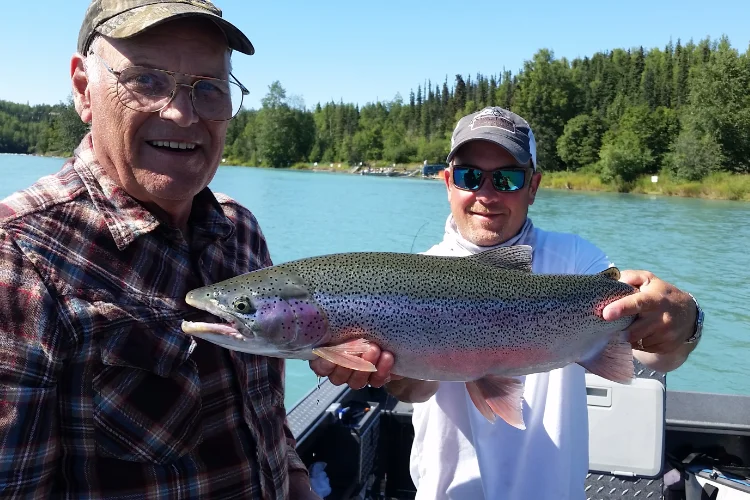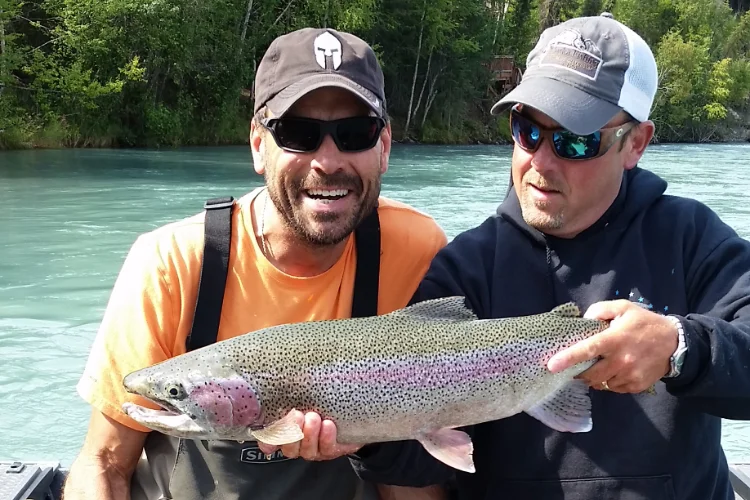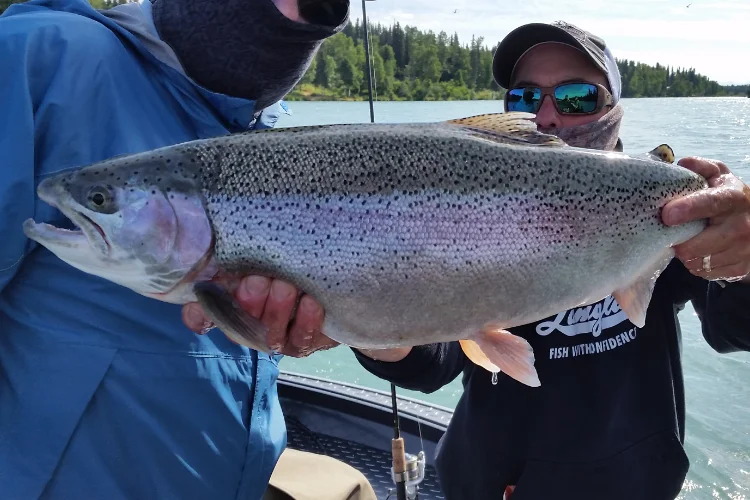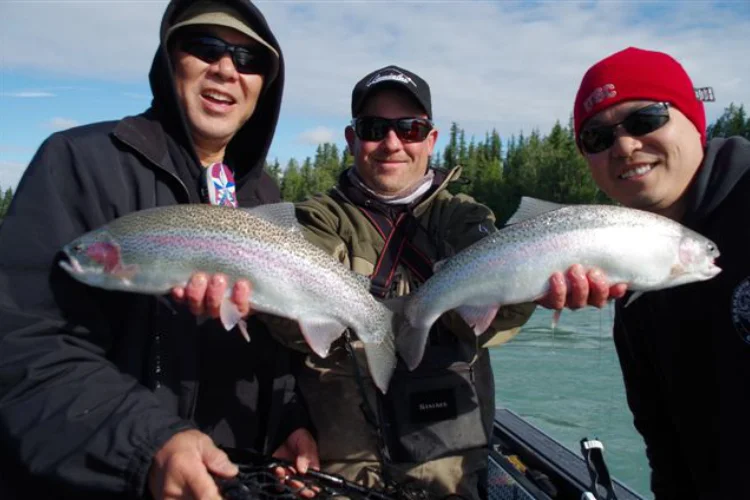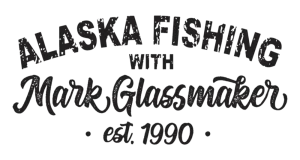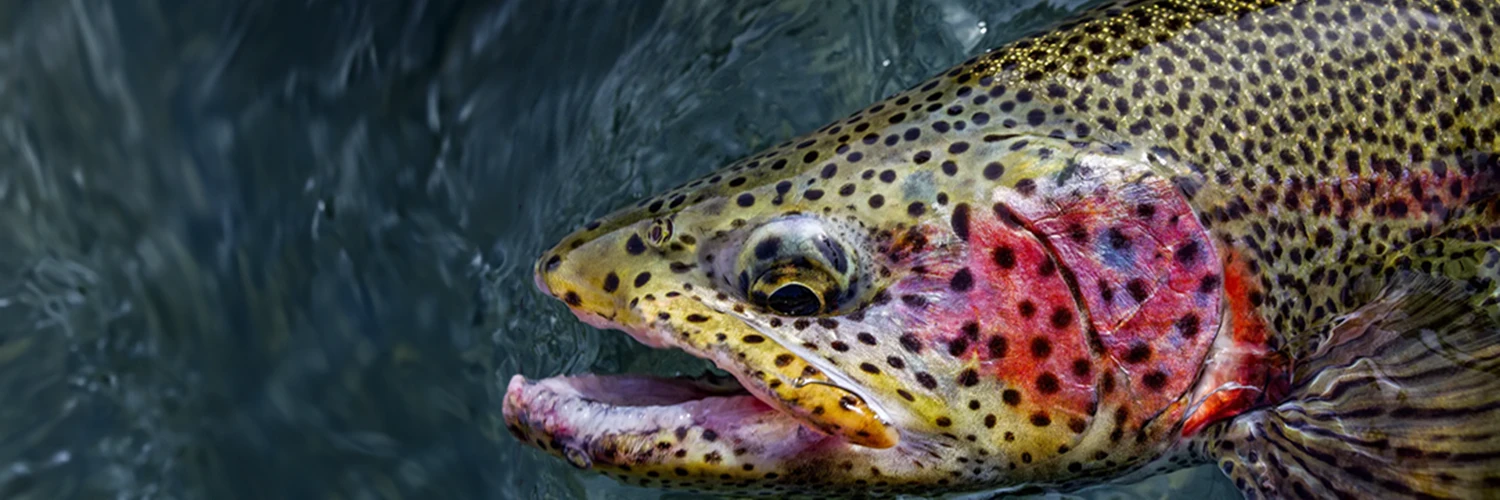
Kenai River
Trout Fishing Trips
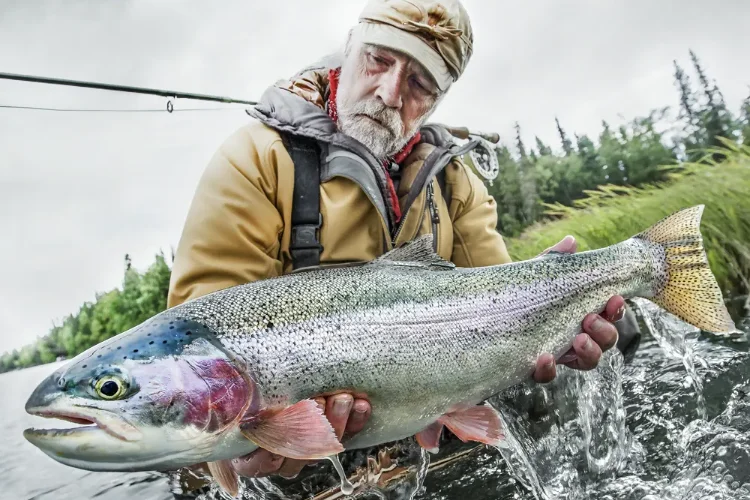
We offer both half and full day Kenai River Rainbow Trout fishing trips, and trout season on the Kenai begins on June 11. The Kenai is closed for trout fishing May 1 – June 10 to allow the trout to complete their annual spring spawn. While fly fishing is one of the most effective methods for targeting Kenai River Rainbows, spinning gear is also very popular. Those wanting to fly fish are urged to consider the private boat option as two anglers per boat is ideal.
Kenai River Rainbow Trout are among the most intelligent and elusive fish in Alaska. Thanks to its proximity to Anchorage and the road system, the Kenai is a premier trout fishing destination, offering easy access compared to the more remote regions of the state. However, this convenience also means that Kenai rainbows face consistent angling pressure throughout their lives. For those that reach full maturity, typically between 12 and 15 years, their experience and instincts make them even more challenging to catch. The reward from patience and persistence is some of the largest wild rainbows on the planet.
Where We Go For Kenai River Trout Fishing
The best trout fishing is always where most food for the fish is located and this varies tremendously throughout the summer. From eating bugs, smolt and leeches to a salmon egg and flesh rich diet, Kenai Rainbows have an abundant and ever-changing food selection. Following their stomach is the key to finding them in the best numbers.
In early and mid-summer months the fish are very spread out and we will be anywhere from below the Soldotna Bridge all the way to Skilak Lake. As we enter the fall months, the trout will congregate behind spawning salmon and much of this occurs in the Kenai National Wildlife Refuge below Skilak Lake.
How We Fish For Kenai River Trout
The Kenai is a large glacial river, and it truly requires a power boat to access correctly and cover the water effectively. The open bows and floors on our custom built 20-foot Willie Classics are a perfect platform for both spin and fly trout fishing on the Kenai.
Fly fishing is one of the most effective and popular methods for targeting Kenai River Rainbows. Depending on the month, offerings range from bugs (nymphs), flesh flies, smolt patterns, leech patterns, and single egg imitations (painted beads). We fish 7wt. or 8 wt. single hand fly and Spey rods for Kenai River Rainbow Trout.
For those more comfortable with spinning tackle, dead drifting flies and beads beneath floats is just as effective as fly-fishing tackle, so don’t shy away if fly fishing is not your bag. Kids also love trout fishing as it provides a lot of action and spinning rods are often best for younger anglers.
Kenai Trout Fishing Rates
June / July / August / September / October
Kenai Half Day – $295pp
Up to 5 hours
Kenai Full Day – $350pp
Up to 8 hours
Upper Kenai Full day – $450pp
Up to 8 hours
Private Charter – $1000
Especially recommended for fly fishing trips
2 people max / Up to 8 hours
Things To Know About Rainbow Trout Fishing On The Kenai River
*While June and July trout fishing can be very productive, the fish are generally spread out and focused on a variety of food sources such as aquatic insects, residual salmon flesh, leeches and out-migrating salmon smolt.
*As fall arrives in August, September, and October, Kenai River rainbow trout begin to gather behind spawning salmon, taking advantage of the abundance of eggs. The spawning cycle starts with king salmon, which spawn from late July through mid-August. Kings distribute their spawning efforts throughout the river system, from just above tidewater in the lower Kenai to the upper stretches below Kenai Lake.
*Next in the cycle are pink salmon (in even-numbered years) and sockeye salmon, which spawn from mid-August into late September. Pinks primarily spawn from Skilak Lake downstream, while sockeye spawn exclusively below both Kenai and Skilak Lakes. The final salmon species to spawn are the silvers, which begin in September and continue well into the winter months. Most silver salmon spawn in the tributaries and mainstem of the upper Kenai, as well as in the first several miles below Skilak Lake.
Kenai River Rainbow Trout Limits
Regulations do allow a limit of one Kenai River Rainbow trout under 16 inches per day but we practice STRICTLY catch and release only for Kenai River Trout. Trout are a resident species that do not die each season and live well over one decade.
The annual spawning parade of salmon in the Kenai River creates a feast for resident rainbow trout, allowing these fish to grow to impressive sizes. Kenai River rainbows frequently exceed the coveted 30-inch mark—a size rarely seen in most trout fisheries, even in Alaska.
Kenai River trout fishing is strictly catch-and-release, and we offer both conventional spinning and fly-fishing gear. Once again, for those seeking the most exclusive and effective fly-fishing experience, a private charter limited to two anglers is highly recommended.
FAQ’s About Kenai Trout Fishing
Are there trout in the Kenai River?
Where is the best fishing on the Kenai River?
When is the best time for trout fishing on the Kenai River?
How is the fishing on the Kenai River right now?
Online Booking Options
More Information on Kenai River Trout Fishing
After several years of falling short of minimum escapement objectives, the 2025 late run of Kenai River king salmon narrowly met the recovery threshold of 14,250 large kings (greater than 34 inches). By the final day of counting, the cumulative sonar estimate stood at 15,015 fish. This benchmark was established under the Kenai River Late …
The 2025 silver salmon run on the Kenai River has been noticeably stronger than in 2024. Last year, anglers faced bait closures and reduced limits, but this season brought a robust return that provided excellent fishing opportunities. Key highlights: Bait opened Aug. 16, right as fishing pressure shifted from sockeye to silvers, with fresh coho …
The summer of 2025 produced the largest return of sockeye salmon to the Kenai River since modern sonar counting began in 1987. By August 19, a staggering 4,252,497 sockeye had passed the Alaska Department of Fish & Game sonar station at river mile 19. The surge began on July 16 with a daily count of …
Kenai River Sockeye Fishing: 468,000 fish in three days! With the 2024 fishing season officially behind us, it’s finally time to look back and recap another blockbuster season for us at Alaska Fishing. Cindy and I are profoundly grateful for all the amazing customers, both new and old, and also for our incredible help as …
Summary of actions at the 2024 Upper Cook Inlet Board of Fisheries Meeting as it pertains to the sportfishing angler visiting the Kenai Peninsula for the next three seasons. The most significant action taken at Upper Cook Inlet Finfish Meeting: Feb 23-March 5, 2024 is in response to the stock of concern status for Kenai …
After a very mild winter and another hot and dry spring here on the Kenai Peninsula, we experienced a very large fire that began in early June and continued well in August and early September. The fire began on June 5, 2019 and was caused by lightning in a remote area of the Kenai National …
